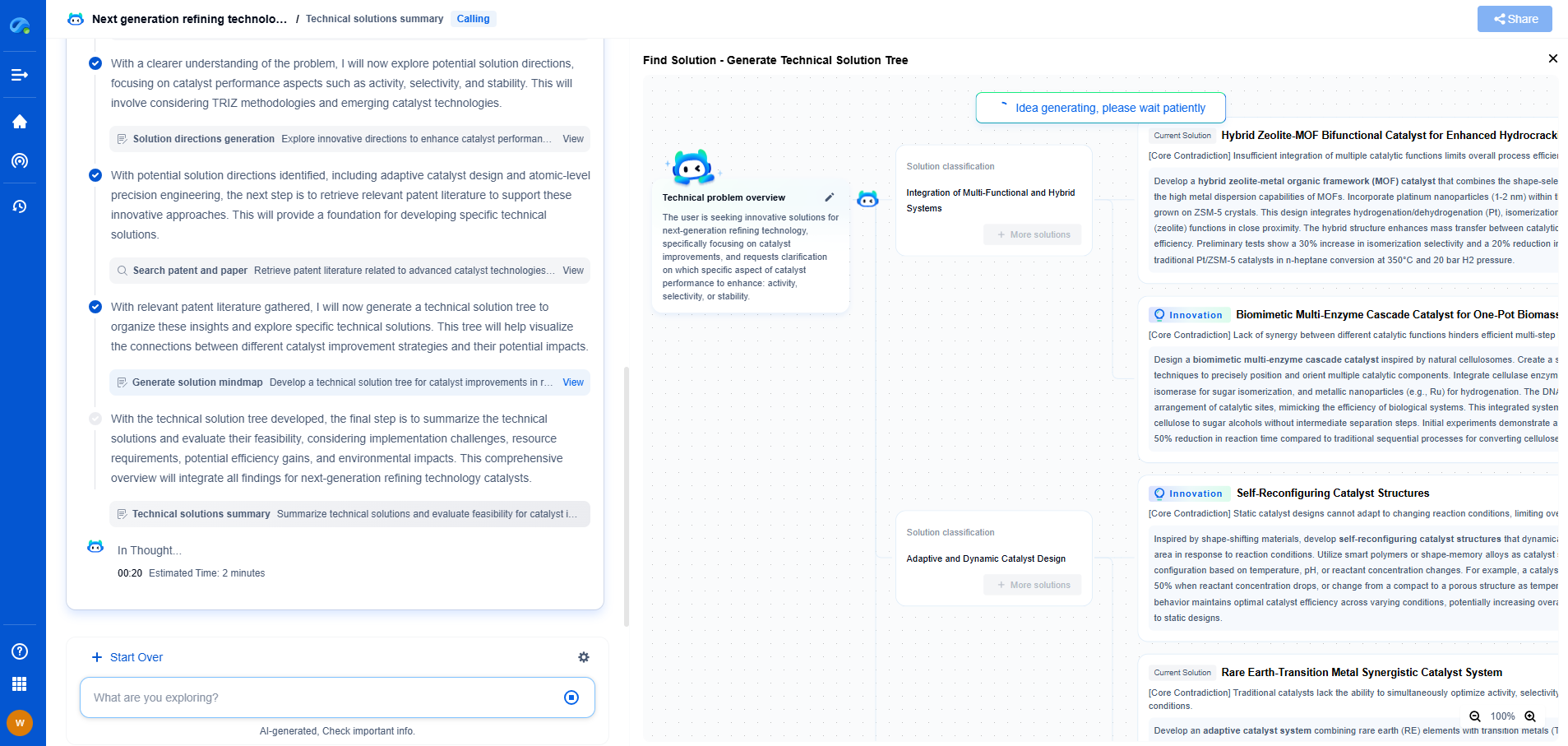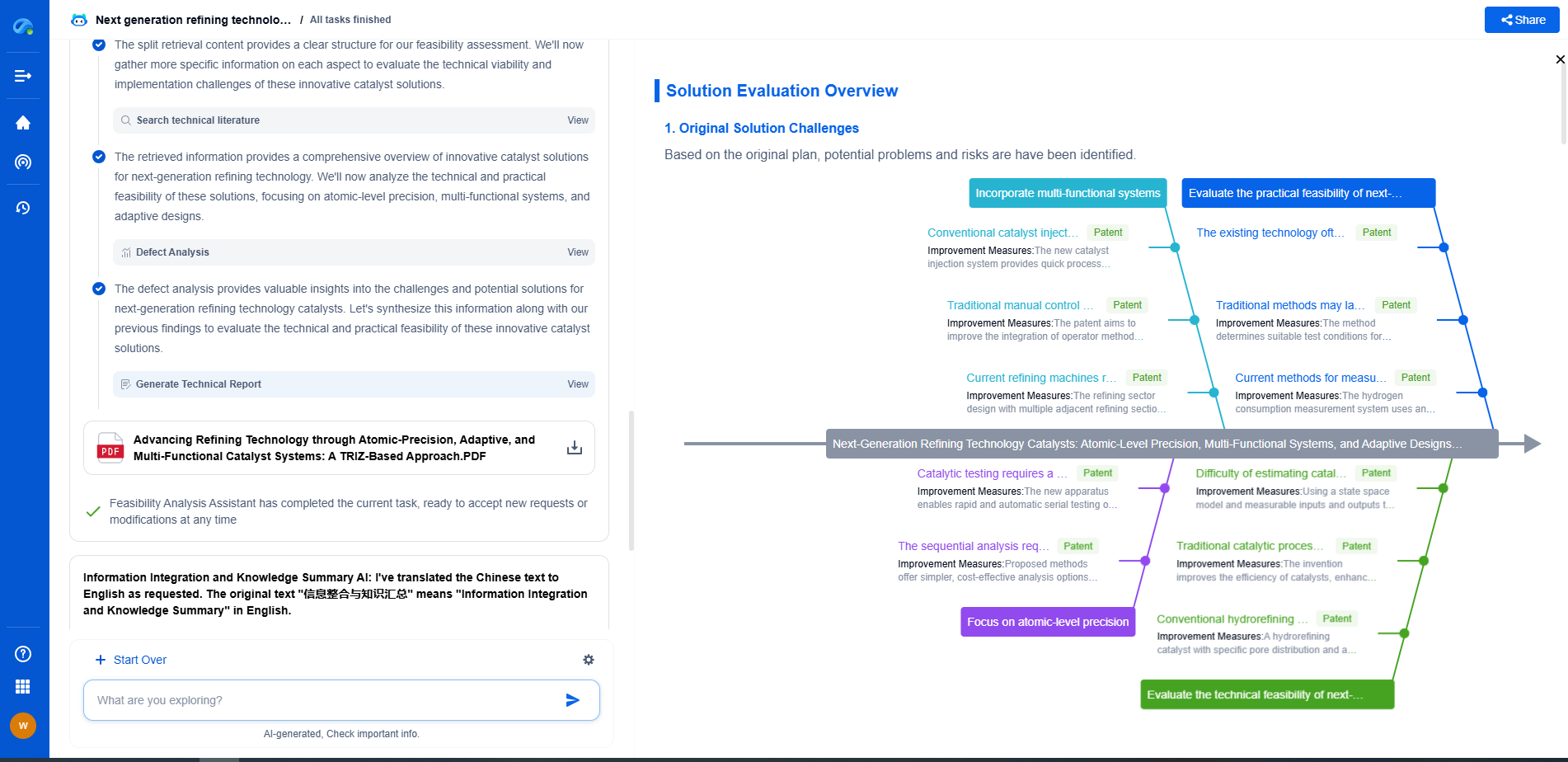Dynamic Cable Rating for Wind: Maximizing Grid Capacity Without Hardware Upgrades
JUN 26, 2025 |
Understanding Dynamic Cable Rating
As the demand for renewable energy continues to soar, maximizing the capacity of existing infrastructure becomes a priority. Dynamic Cable Rating (DCR) emerges as an innovative solution to manage this challenge, particularly in the realm of wind energy integration. But what exactly is DCR, and how can it enhance grid capacity without necessitating costly hardware upgrades?
DCR is a method that allows for the real-time adjustment of cable ratings based on prevailing environmental conditions. Traditional cable ratings are often conservative, determined by worst-case scenarios to ensure safety and reliability. However, these static ratings do not account for the operational benefits that can be realized when environmental conditions are more favorable. By employing DCR, utilities can capitalize on real-time data such as temperature, wind speed, and solar radiation to optimize cable performance.
The Role of DCR in Wind Energy
Wind energy generation is inherently variable, which can pose challenges for grid operators striving to maintain a balanced and efficient power supply. DCR offers a pathway to mitigate some of these challenges by enhancing the ability of power lines to handle fluctuating loads. When wind speeds are high, the cooling effect on overhead power lines can allow them to carry more current than their static ratings would suggest. This dynamic adjustment capability can thus facilitate an increase in wind energy integration into the grid without requiring physical upgrades to transmission infrastructure.
By optimizing the available capacity of existing cables, DCR enables utilities to reduce congestion on power lines, thereby lowering the risk of curtailment and improving overall system efficiency. This approach can be particularly advantageous in areas with significant wind energy potential but limited grid infrastructure development.
Benefits of Implementing DCR
Adopting DCR presents multiple benefits for both utilities and consumers. Firstly, it represents a cost-effective strategy for enhancing grid capacity. By maximizing the utilization of existing infrastructure, utilities can defer or even eliminate the need for expensive upgrades or new constructions, resulting in significant cost savings.
Furthermore, DCR can contribute to environmental sustainability. By facilitating a higher penetration of renewable energy sources like wind, DCR helps reduce reliance on fossil fuels, thereby lowering greenhouse gas emissions. This aligns with global efforts to combat climate change and transition toward cleaner energy systems.
Another critical advantage of DCR is improved grid reliability. By providing real-time data and analytics, DCR systems can help operators make informed decisions about load management, preventing overloading and potential outages. This increased reliability translates into a more stable power supply for consumers.
Challenges and Considerations
Despite its numerous benefits, the implementation of DCR is not without challenges. Utilities must invest in sophisticated monitoring and control systems capable of processing vast amounts of real-time data. Additionally, operators need to be trained to interpret this data and make timely decisions regarding cable capacity adjustments.
Regulatory frameworks must also evolve to accommodate the dynamic nature of cable ratings. Traditional standards and protocols may need to be revisited to ensure they align with the operational realities of DCR systems.
Conclusion
Dynamic Cable Rating stands out as a powerful tool for maximizing grid capacity in the context of wind energy integration. By leveraging real-time data and environmental conditions, DCR offers a cost-effective, sustainable, and reliable solution for enhancing the efficiency of existing power infrastructure. As the transition to renewable energy accelerates, innovations like DCR will play a crucial role in ensuring that the grid can keep pace with evolving energy demands without the need for extensive hardware upgrades. Through continued investment, research, and regulatory adaptation, DCR has the potential to revolutionize the way we manage and optimize our power systems for a sustainable future.
Empower Your Wind Power Innovation with AI
In the fast-evolving landscape of wind turbine technology—where aerodynamic optimization, generator efficiency, and structural innovation are critical—staying ahead requires more than just expertise. It requires intelligent tools that accelerate R&D and protect your competitive edge.
Patsnap Eureka is your AI-powered research assistant, designed specifically for innovators like you working at the forefront of Wind Motors. Whether you're analyzing blade design trends, exploring novel gearbox architectures, or navigating complex global patent landscapes, Eureka streamlines the entire process with precision and speed.
👉 Experience how Patsnap Eureka can revolutionize your R&D and IP strategy. Request a demo today and power up your next breakthrough.
- R&D
- Intellectual Property
- Life Sciences
- Materials
- Tech Scout
- Unparalleled Data Quality
- Higher Quality Content
- 60% Fewer Hallucinations
Browse by: Latest US Patents, China's latest patents, Technical Efficacy Thesaurus, Application Domain, Technology Topic, Popular Technical Reports.
© 2025 PatSnap. All rights reserved.Legal|Privacy policy|Modern Slavery Act Transparency Statement|Sitemap|About US| Contact US: help@patsnap.com

